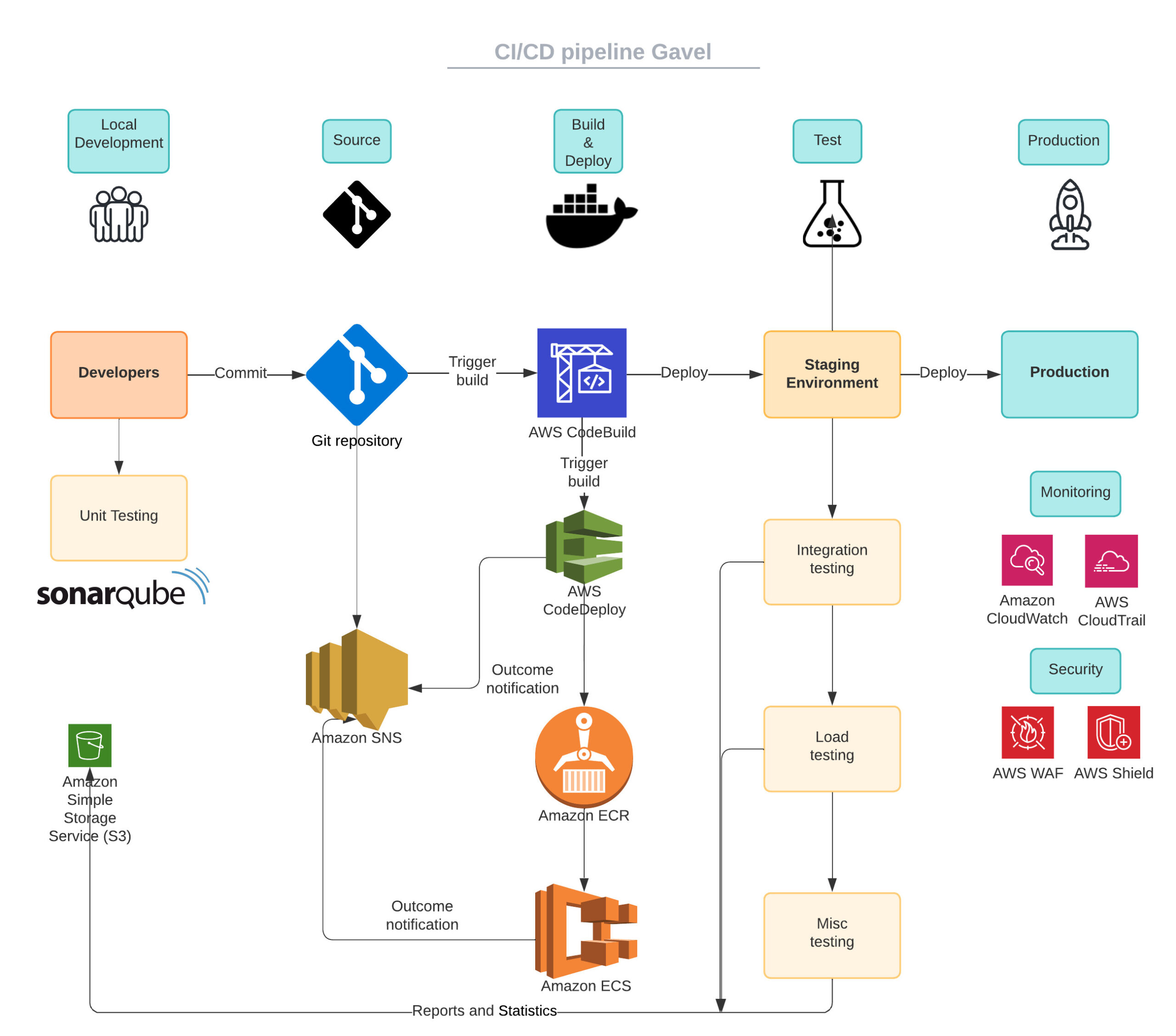Gavel: A live auction platform that combines live video shopping with live auctions
Category: Auction, eCommerce
Services: DevOps, Cloud Architecture Design and Review
Category: Auction, eCommerce
Services: DevOps, Cloud Architecture Design and Review

Gavel is a live auction platform that brings collectors, buyers, and sellers together. Gavel combines live video shopping with live auctions to add fun and discoverability to online purchasing. Gavel allows you to chat in the Gavel app with like-minded people in the virtual room, ask questions during the show, and bid on your favorite items directly.
The client’s existing deployment process was manual and error-prone, which was leading to delays and inconsistencies in their deployments. They needed a way to automate their deployment process and ensure that their deployments were consistent and reliable.
We used AWS CodePipeline to automate the client’s deployment process (for multiple environments) it automatically builds and tests their code, and then deploys it to the provided environment. The pipeline was configured to automatically trigger on code changes in their source code repository, which eliminated the need for manual intervention in the deployment process.
We also configured the pipeline to use AWS CloudFormation to manage the client’s infrastructure. This allowed us to define their infrastructure as code and automate the creation and management of their resources.
Additionally we utilized several tools within the pipeline, which made sure the code’s quality and integrity remains intact , such as Pre commit hooks, Sonarqube and Unit testing
With the new CI/CD pipeline in place, the client was able to achieve faster and more reliable deployments. The pipeline eliminated the need for manual intervention in the deployment process, which helped reduce the risk of human error and ensured consistent and reliable deployments.
The client was also able to improve their development process by using the pipeline to automate their testing and deployment processes. This allowed them to focus on developing new features and updates, rather than spending time on manual deployment tasks.
In addition, the client was able to achieve cost savings by using AWS CodePipeline. By automating their deployment process, they were able to reduce the amount of time and resources needed to manage their deployments.
By leveraging AWS CodePipeline, our client was able to achieve faster and more reliable deployments, improve their development process, and achieve cost savings. The new CI/CD pipeline eliminated the need for manual intervention in the deployment process, which helped reduce the risk of human error and ensured consistent and reliable deployments. Overall, the new pipeline helped our client deliver new features and updates to their customers faster and more efficiently.
